{{!completeInfo?'请完善个人信息':''}}
精准高效领先的融资对接服务


Remember the popular game 'Crazy Knights' that broke out on the small game platform at the beginning of the year?


Remember the popular game 'Crazy Knights' that broke out on the small game platform at the beginning of the year? This product is created by Crazy Games (Beijing Hautonjiake). As of this year, its performance once surpassed another product 'King of Salted Fish,' dominating the top position in the best-selling list of small games for several months. According to Quest Mobile data, 'Crazy Knights' had reached 85 million MAU on the WeChat Mini Program platform in March alone. Looking across all platforms (WeChat, Douyin, app), its estimated monthly revenue has already exceeded one billion.

With such strong revenue-generating capabilities, it's hard not to catch the attention of 'keen-eyed' developers. Just a while ago (in June), 'The Road to the Great Thousand,' developed by Xiamen Yanqu Network and published by 37 Interactive Entertainment, suddenly emerged, sweeping away many popular games, and secured the top spot on the WeChat Mini Game best-seller list. In addition, the third-ranked 'Adventure Grand Battle' and fourth-ranked 'Leaping Kid' games are also products with a core gameplay mechanic of opening treasure chests. The companies behind them are 4399 and Poker City, respectively.
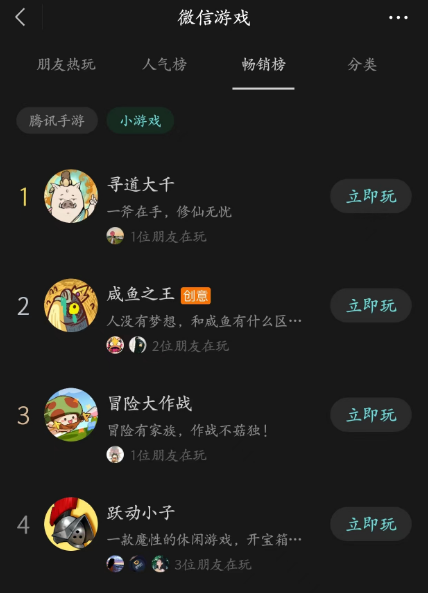
Recently, the author noticed that 37 Interactive Entertainment's "The Road to the Great Thousand" transformed into "Xiao Yao Wen Dao" and was launched in Mainland China, Hong Kong, Macau, and Taiwan. In August, it had over 270,000 downloads on both platforms, with an estimated revenue of $430,000. During the same period, Hero Games also released the mobile game "サンローラン騎士団" (Saint Laurent Knights) in Japan, with opening treasure chests as the core gameplay mechanic. The product reached the top 4 on Japan's iOS overall ranking on its first day, with 200,000 downloads on both platforms in its first week and an estimated revenue of nearly $260,000.
Several well-known game developers have jumped on the "treasure chest opening" bandwagon in succession. Combined with the continuous appearance of similar games on the charts both domestically and internationally, it's clear that "opening treasure chests" has a significant market appeal.
In this article, we will focus on analyzing "Xiao Yao Wen Dao" while briefly mentioning the games "サンローラン騎士団" (Saint Laurent Knights) and "Adventure Grand Battle." We will explore the evolution of this genre, hoping to provide readers with some valuable insights.
Part 1: When Opening Treasure Chests Becomes the Core Gameplay
Let's briefly review the "loot box" gameplay. In most games, loot boxes are often a representation of in-game purchases or rewards. However, when they become a core gameplay mechanic, here's how it typically works: When players enter the game, they can directly obtain various quality and types of equipment through loot boxes. After each box is opened, players must decide whether to equip or dismantle the items. Subsequently, they engage in activities like boss battles or player versus player (PvP) modes, repeating this cycle. Of course, each loot box opening consumes either stamina or a limited number of attempts, which can vary depending on the game's settings.
Currently, one of the earliest and most well-known games featuring loot box gameplay is "Crazy Knights," characterized by its cartoonish art style and knight-themed setting. It's worth noting that there isn't specific research indicating which theme is best suited for this type of gameplay. However, game developers have made several attempts to differentiate their products.
For instance, "Spiritual Path: The Quest" has embraced the widely popular theme of cultivation. Centered around this theme, it seamlessly incorporates common elements from cultivation games, such as caves, tribulations, demon-sealing towers, and secret realms. Additionally, they've replaced loot boxes with equipment drops from sacred trees, creating a rather unique and somewhat whimsical world view – where simply chopping down trees can lead to cultivation and equipment acquisition. This setting adds a touch of absurdity to the game.

In terms of visuals and character design, "Spiritual Path: The Quest" embraces an elegant ink-wash painting style that perfectly suits the theme of cultivation. It pairs this with uniquely "ugly" yet distinctive character designs that create a visual impact. What's particularly clever about these character designs is that they bear a striking resemblance to characters from the classic Chinese novel "Journey to the West" (this conjecture is also confirmed by promotional materials). In summary, "Spiritual Path: The Quest" demonstrates astute character design, managing to combine a cute and quirky aesthetic that aligns with contemporary trends while also being readily embraced by players both domestically and internationally.
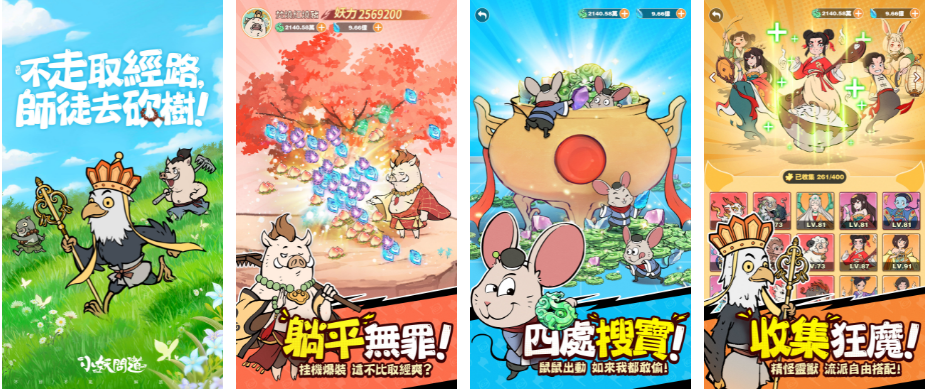
In terms of gameplay, it's safe to say that "Spiritual Path: The Quest" follows the typical formula of a loot box game. It features other common gameplay elements such as PVE, PVP, boss battles, treasure hunting, and more. However, these elements have been creatively expressed within the context of the cultivation theme. For instance, opening loot boxes is replaced with chopping down sacred trees, mounts become divine beasts, PVP transforms into magical duels, and the monsters in challenge levels take on the appearance of traditional Chinese mythical creatures.
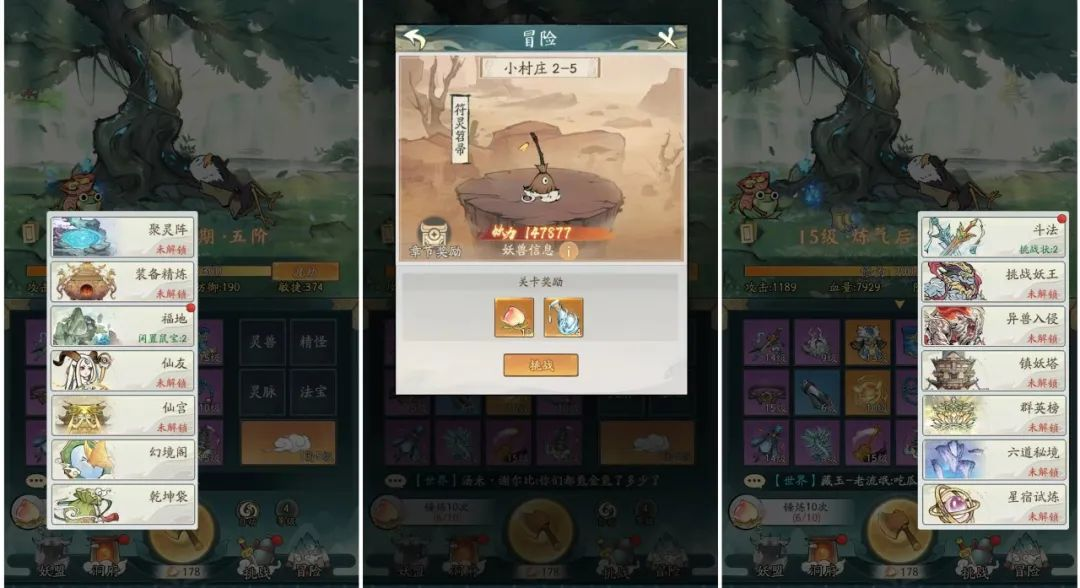
"Spiritual Path: The Quest" also includes an auto-loot box feature, but unlike "Crazy Knights," this game offers a multi-opening option, allowing players to open up to 3 boxes at once. It's worth mentioning that the inclusion of continuous loot box opening has been a topic of debate. For instance, the producer of "Crazy Knights," Qian Liang, once mentioned in a discussion that when loot box opening is a core gameplay element, it is tied to player progression, development, and rewards. If continuous loot box opening is allowed, it can quickly consume players' resources. Therefore, they not only stick to single openings but also deliberately lengthen the loot box opening animations. In summary, the loot box opening gameplay, on its own, can be somewhat monotonous. While players may experience the satisfaction of collecting treasures, it's undeniable that without additional mini-games or richer content, the game's upper limit may be constrained.

The current challenge faced by "Spiritual Path: The Quest" lies in the fact that players who have experienced this type of gameplay may easily become bored due to the familiar mechanics, especially in loot box opening games. However, for players who have not yet experienced this gameplay, and are interested in the theme and art style, the game can still provide a satisfying experience in the short term. Its low learning curve is also likely to attract non-core user groups and potentially convert them into paying users. Looking at its current performance, "Spiritual Path: The Quest" has been doing quite well in mainland China, Hong Kong, and Taiwan. It has achieved impressive rankings, including being the second overall game and the top casual game in Taiwan. According to extensive data, the game has generated revenue close to $440,000 in these three regions.
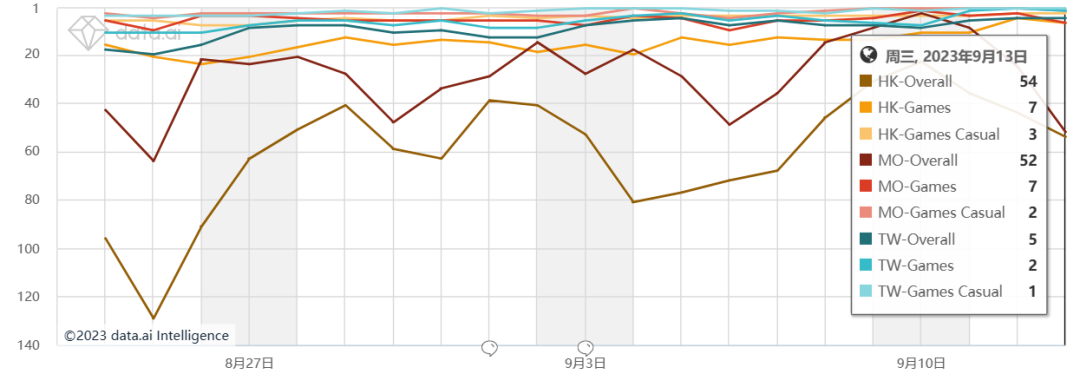
However, despite the current success of "Spiritual Path: The Quest," games of this type will need to find more suitable points of innovation beyond changing themes and character designs if they want to maintain a long-term presence in the minds of users.
Part 2: From "Knights-like" to "Loot Box Plus": The Upgraded Fusion Gameplay
It needs to be acknowledged that hit products often drive a "like" effect, as seen with games like "Bullet Force" and "Slime Adventure," which have spawned hundreds of similar products. Since the success of "Crazy Knights," the "Knights-like" genre has continued to grow. However, past experiences have shown us that the proliferation of "like" products often leads to category fusion and innovation.
Hero Games' release of "Saint Laurent Knights" in Japan also revolves around the loot box gameplay. In addition to loot boxes, "Saint Laurent Knights" incorporates features like a girl-raising system, dungeons, as well as mini-games such as fishing, treasure hunting, and block puzzles. It's worth noting that in "Saint Laurent Knights," the block puzzle game is tied to the skill upgrade system, providing some entertainment while leveling up skills.
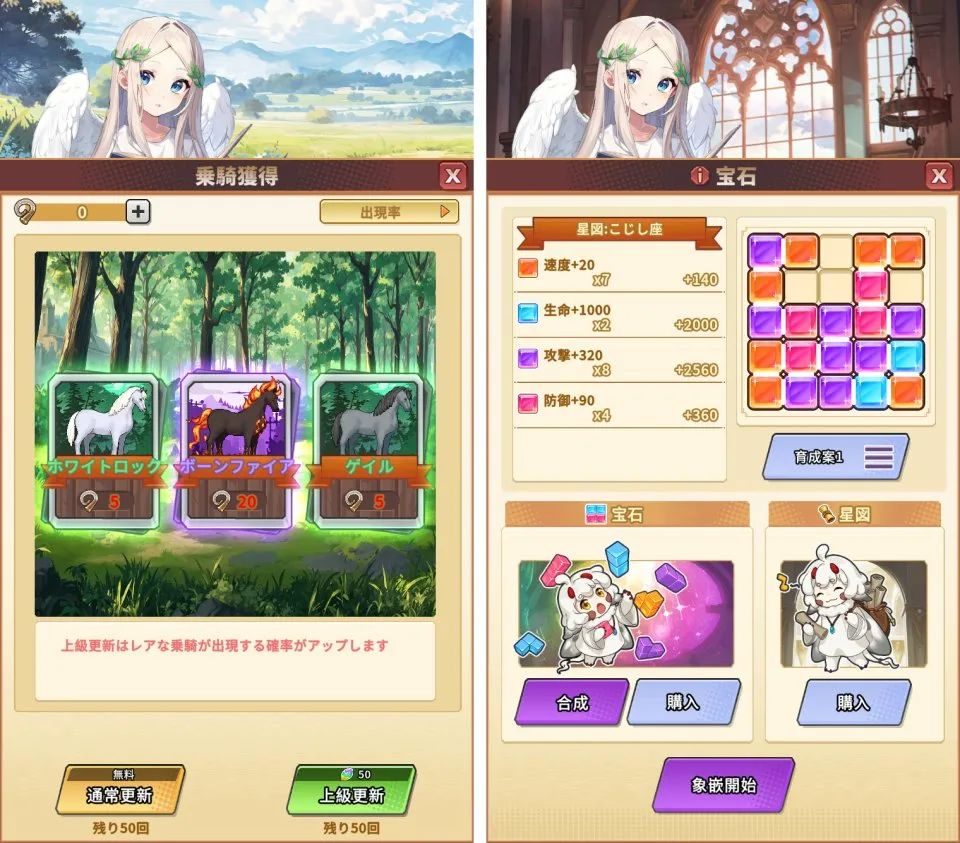
In the fishing gameplay aspect, "Saint Laurent Knights" follows a design similar to "Crazy Knights" without incorporating excessive commercial elements (i.e., not selling in-game content linked to game progress). The primary goal is to use these mini-games to enhance player retention.
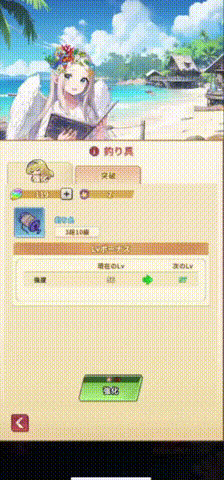
As for the girl's cultivation aspect, even though it's not a groundbreaking feature in most RPG games, incorporating it into the "Saint Laurent Knights" as part of an open-box game can be seen as a crucial step in differentiating itself. Around the girl's cultivation, "Saint Laurent Knights" has added strategic depth in what should have been fully automated battles. Players can actively choose their favorite characters for cultivation and form a team for battles. It can be said that "Saint Laurent Knights" provides a new perspective for innovation in this genre. From a commercial perspective, this design undoubtedly adds depth to monetization and could be considered one of the directions for heavy monetization in open-box games.
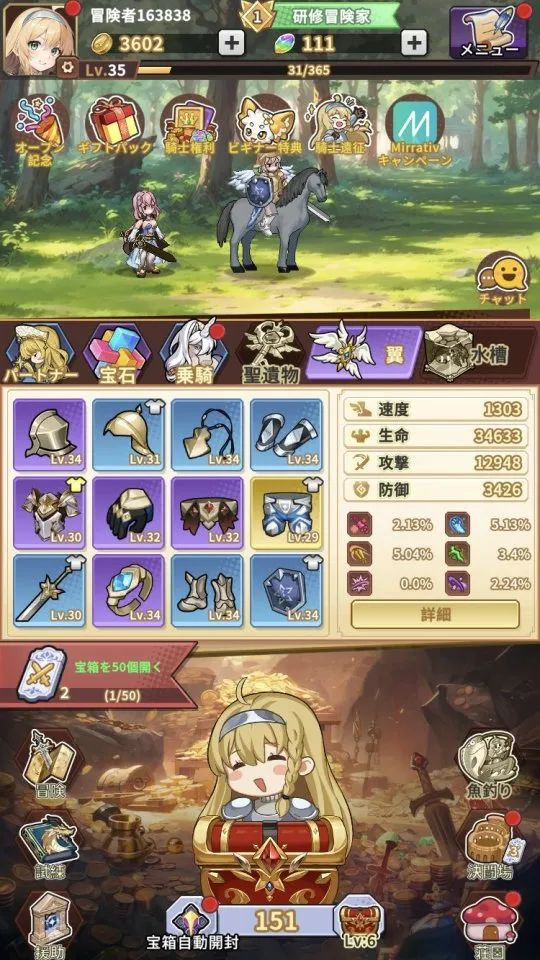
When it comes to the pricing of gift packages in "Saint Laurent Knights," they range from 120 Japanese yen to 13,000 Japanese yen. When converted to Chinese yuan, this pricing is similar to the pricing of in-game gift packages in domestic mobile games, ranging from 6 yuan for the first recharge package to 648 yuan. However, based on feedback from Japanese players, despite incorporating RPG cultivation gameplay, most players still consider "Saint Laurent Knights" to be a game on the lighter side of mid-core or even casual gaming. As a result, they tend to be more conservative when it comes to spending money on in-game purchases. Many players were initially attracted by the slogan of "an RPG where you can open over 1000 boxes every day" but were discouraged by the extent of monetization they encountered during gameplay.

If Hero Games chose to broaden the gameplay of opening boxes by incorporating RPG cultivation, then 4399 decided to deepen the fusion between the two elements while continuing the characteristics of "Slime Adventure."
When looking at the game scenes, both the combat visuals and the UI for the skill system bear a strong resemblance to "Slime Adventure." In terms of peripheral gameplay, "Adventure Battle" also largely inherits the content from "Slime Adventure," such as pet raising, estate system, team dungeons, and more.
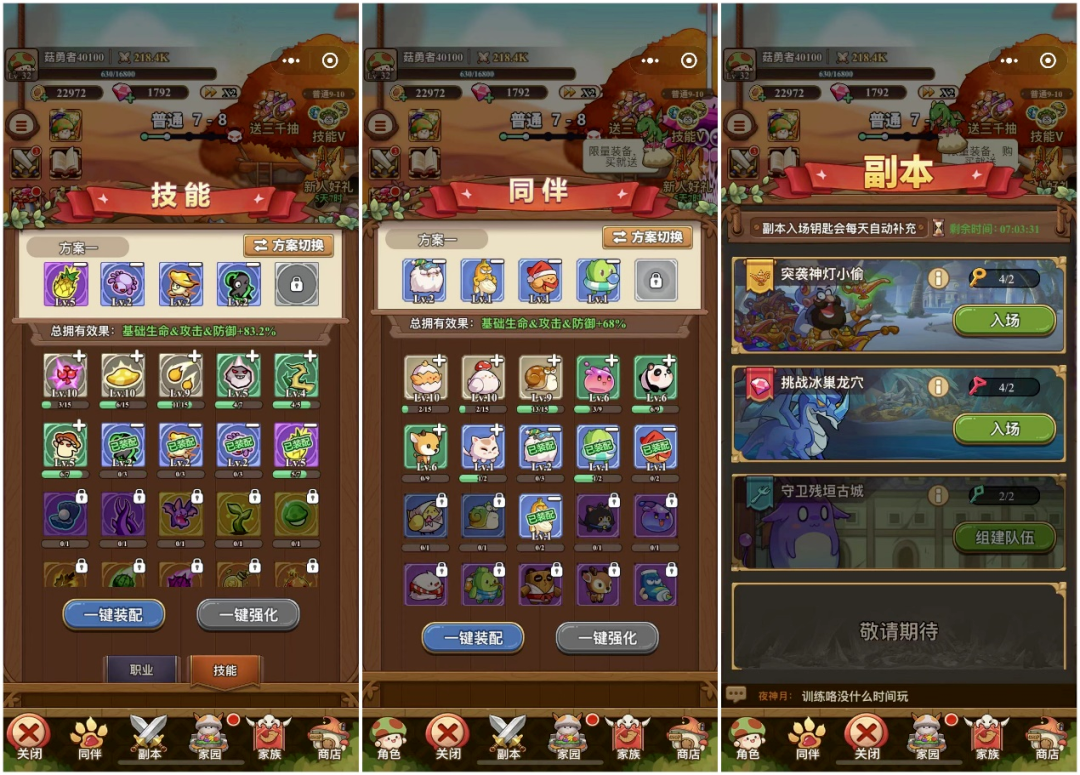
As for the core gameplay of opening boxes, "Adventure Battle" replaced the character attribute system that relied on coins for upgrades with an equipment system. Additionally, they changed the appearance of UI elements like treasure chests to match the "Slime" theme, using items like genie lamps instead.
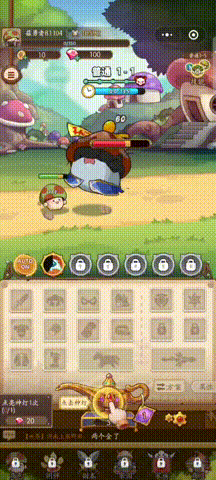
Of course, whether it's "Xiao Yao Wen Dao," "Saint Laurent Knights," or "Adventure Battle," their success on the bestseller charts is certainly attributed to user acquisition efforts. According to Tencent Advertising's data presented at this year's Game Advertising Ecology Summit, games featuring the "opening boxes" gameplay (similar to "Crazy Knights") accounted for 41% of the user acquisition scale, leading significantly over card games (14%), tower defense (13%), and synthesis games (9%), which ranked second in user acquisition scale.

By the end of August, the advertising material count for "Xun Dao Da Qian" (the domestic version of "Xiao Yao Wen Dao") exceeded 82,000, with nearly 10,000 ads being deployed in the Greater China region (including Mainland China, Hong Kong, and Taiwan). "Saint Laurent Knights," since August 24th, has deployed more than 24,000 ads in the Japanese region.
The significant investment in advertising has yielded immediate results, with all the mentioned games entering the top rankings in their respective target regions (Mainland China, Hong Kong, Taiwan, and Japan) and gaining a substantial user base in a short period.
Part 3: Conclusion
In the current era dominated by gacha gameplay, more and more gacha-style games are emerging. From "Knight's Brigade-like" to "Gacha+", it's evident that Chinese game developers are exploring new growth opportunities through genre fusion. However, a key challenge arises as more similar products flood the market: how to differentiate and innovate in gameplay.
Nevertheless, judging by the fusion and evolution strategies of these "Gacha+" products, a new wave of trends may already be on the horizon.
·END·
文章作者:Sailing Global
版权申明:文章来源于Sailing Global。该文观点仅代表作者本人,扬帆出海平台仅提供信息存储空间服务,不代表扬帆出海官方立场。因本文所引起的纠纷和损失扬帆出海均不承担侵权行为的连带责任,如若转载请联系原文作者。 更多资讯关注扬帆出海官网:https://www.yfchuhai.com/

{{likeNum}}
好文章,需要你的鼓励
 已关注
已关注
 关注
关注

微信号:yfch24
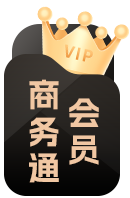
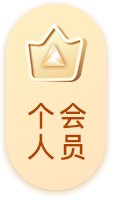

微信号:yfch24
小程序


公众号

社群















